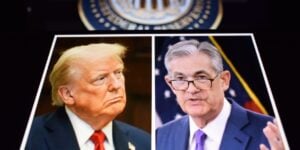An important aspect of the study of sound money is to correctly identify historical cases of free markets in money and banking versus regulated markets in money and banking. If we cannot correctly separate one from another then our conclusions will inevitably be biased. The period known in the U.S. as the “free banking era” is a case of wrong classification. Albeit the system was based on the so called “free banking laws,” the outcome of such legislation was not a proper system of free banking but a dangerous dynamic of incentives. As Selgin (1988, pp. 12-15) and Dowd (1992, chapter 11) show, the banks did not only suffered from inconvenient regulation and requirements, it’s failure was also driven by political, rather than banking, instability.
The specifics of the law varied from state to state, a good review can be found in Dowd (1992, chapter 11). The free banking laws from Michigan and New York were the based for the laws in the other states. Some states did not allowed for issuer banks whatsoever, others only allowed issuance permission to one bank only, and in most of them branching was outlawed. This last requirement was especially problematic because it constraint the possibility of risk diversification of the banks. If branch is allowed, then the banks can distribute the reserves and manage their notes through different branches that are geographically dispersed. Good business and bad business in different places cancel each other out. But if branch is not allowed, then one branch cannot borrow money from another branch. What could be an internal reallocation of reserves becomes a higher debt for the bank.
Although the reform was to bring more freedom of entry to the banking market, the government did not want to resign to the benefits of receiving financial assistance from privileged banks as was the case. Thus, any bank was free to entry into the market provided it buys state-bonds to secure their notes. To issue 90USD in banknotes the banks were required to buy 100USD in government bonds. By depositing these bonds into the controller the bank would receive the corresponding certified currency. This is not a marginal regulation to a free banking system, it is a game-changing regulation. Under free banking banks’ business is to capture savings in base or commodity money (i.e. gold) and manage the administration of the deposits they receive. But the “free banking laws” gave the banks the incentives to speculate in government. Furthermore, because the government bonds were not commonly liquid they failed to be an efficient security for the issued banknotes. If the bank is facing higher demands to retire the deposits it may found itself in a hard time to make the “security” liquid. These “wildcat” banks, which were not as frequent as sometimes they are represented, were not the outcome of freedom in banking but the result of the incentives put in place by the banking regulation. Because banks could issue notes according to the face value of the bonds, rather than the market price, they had the door open to use the new notes to buy further rounds of bonds and get capital gains from an increase in the market value of the purchased bonds.
But these were not the only problems caused be these laws. While in free banking banks expand and contract their issuance of banknotes as they receive or loss deposits from their clients, the bond requirement shifts the anchor of money supply from commodity money to government bonds. Thus, during the Civil War bonds were issued in extent. States went into fiscal deficit and this had a negative effect on the valuation of the state bonds. Conversely this affected the portfolio of the banks and many of them went bankruptcy. The states where this was a problem did not suffer from a inherent instability in banking without a lender of last resort, but on the unavoidable effects of fiscal deficits.
Later, when the government started to use fiscal surplus after 1882 to contract the federal debt it imposed a constraint on the banks to match cyclical changes on the money demand due to harvest seasons. Now it was hard and expensive to buy state bonds for a temporary term to met the temporary increase in money demand. It became harder for banks to met the withdrawal demand. These cyclical changes in the demand played an important role in the banking crisis of 1873, 1884, 1893 and 1907. Furthermore, these crises were a motive for the creation of the Fed and the end of freedom of issuance by different banks.
To call a set of laws “free banking laws” and to effectively have a “free banking system” can be two very different things. As long as the study of sound money is considered relevant, to correctly spot monetary problems that have their origin in market failure or regulation failure is of importance.
Nicolas Cachanosky is a doctoral student in economics at Suffolk University, as well as a previous Sound Money Essay Contest winner.
Image by Salvatore Vuono / FreeDigitalPhotos.net.



